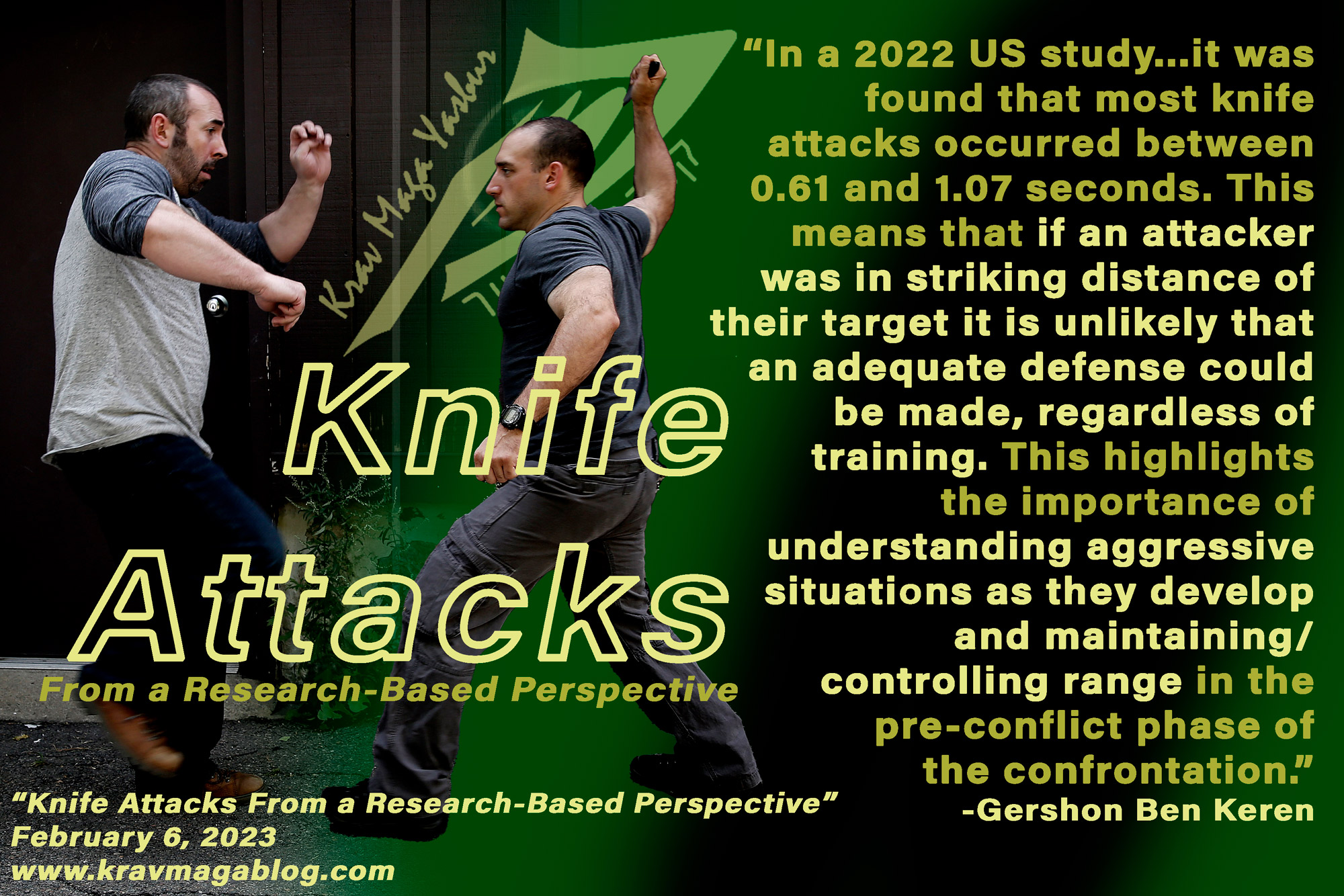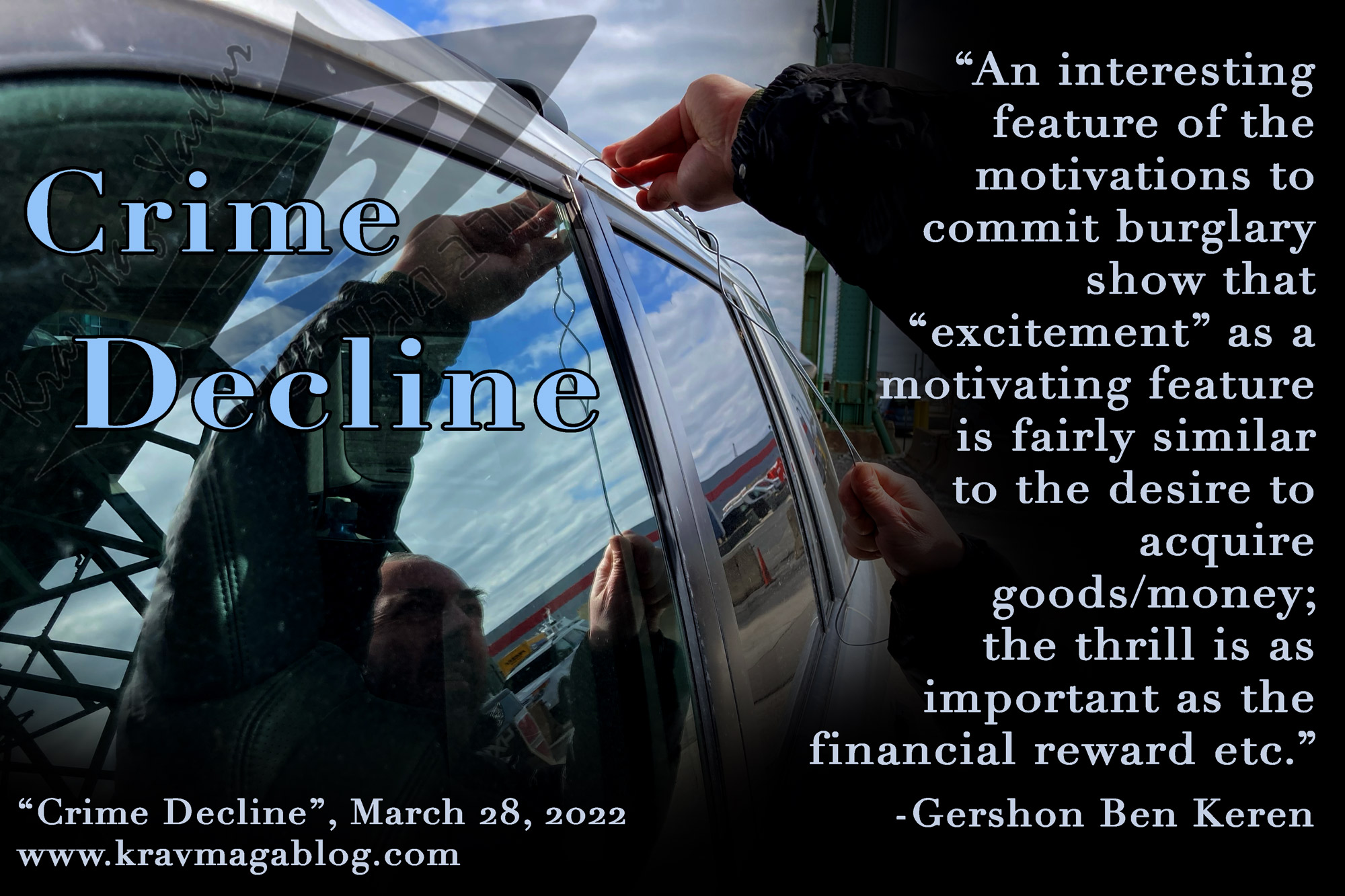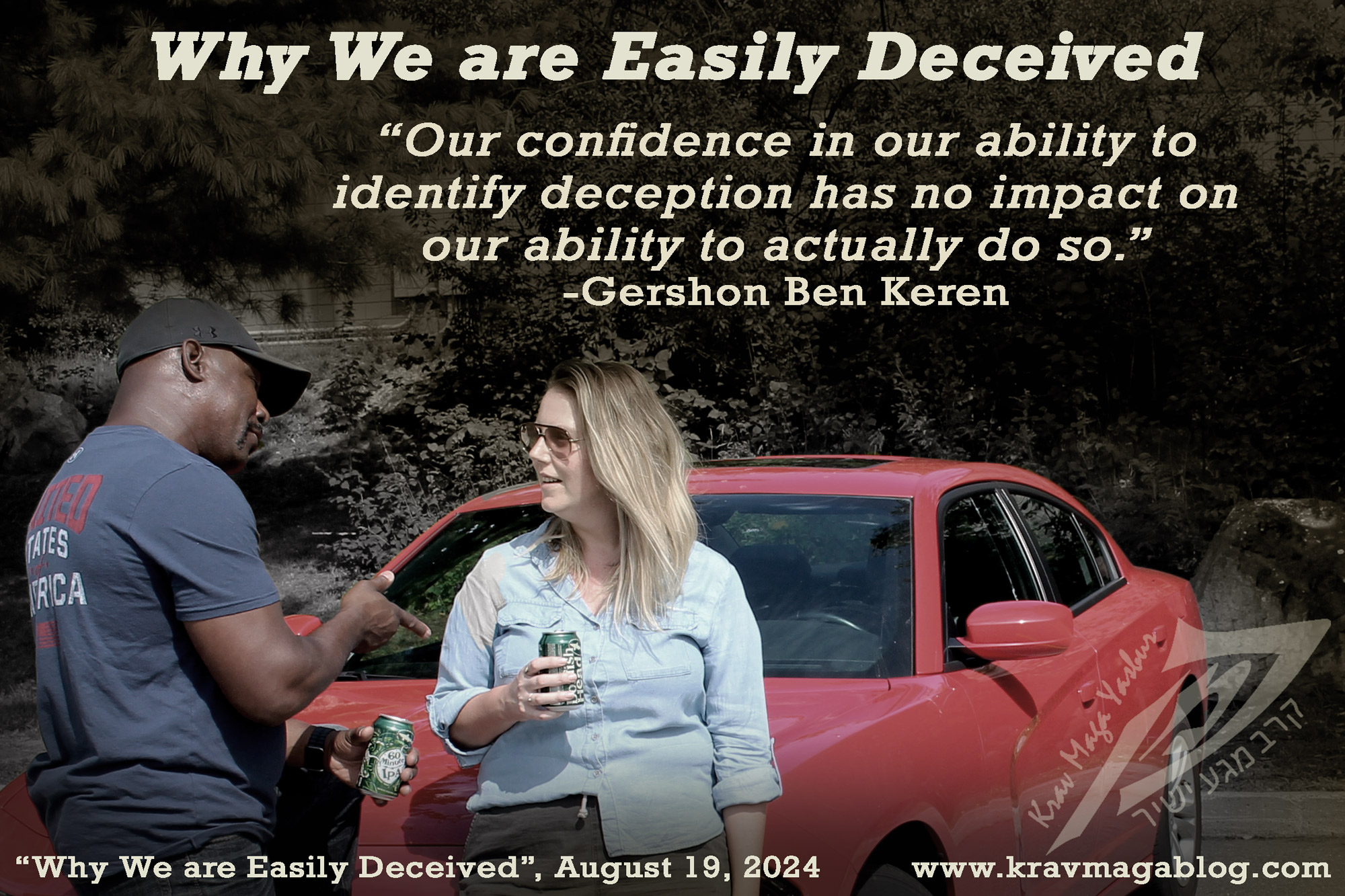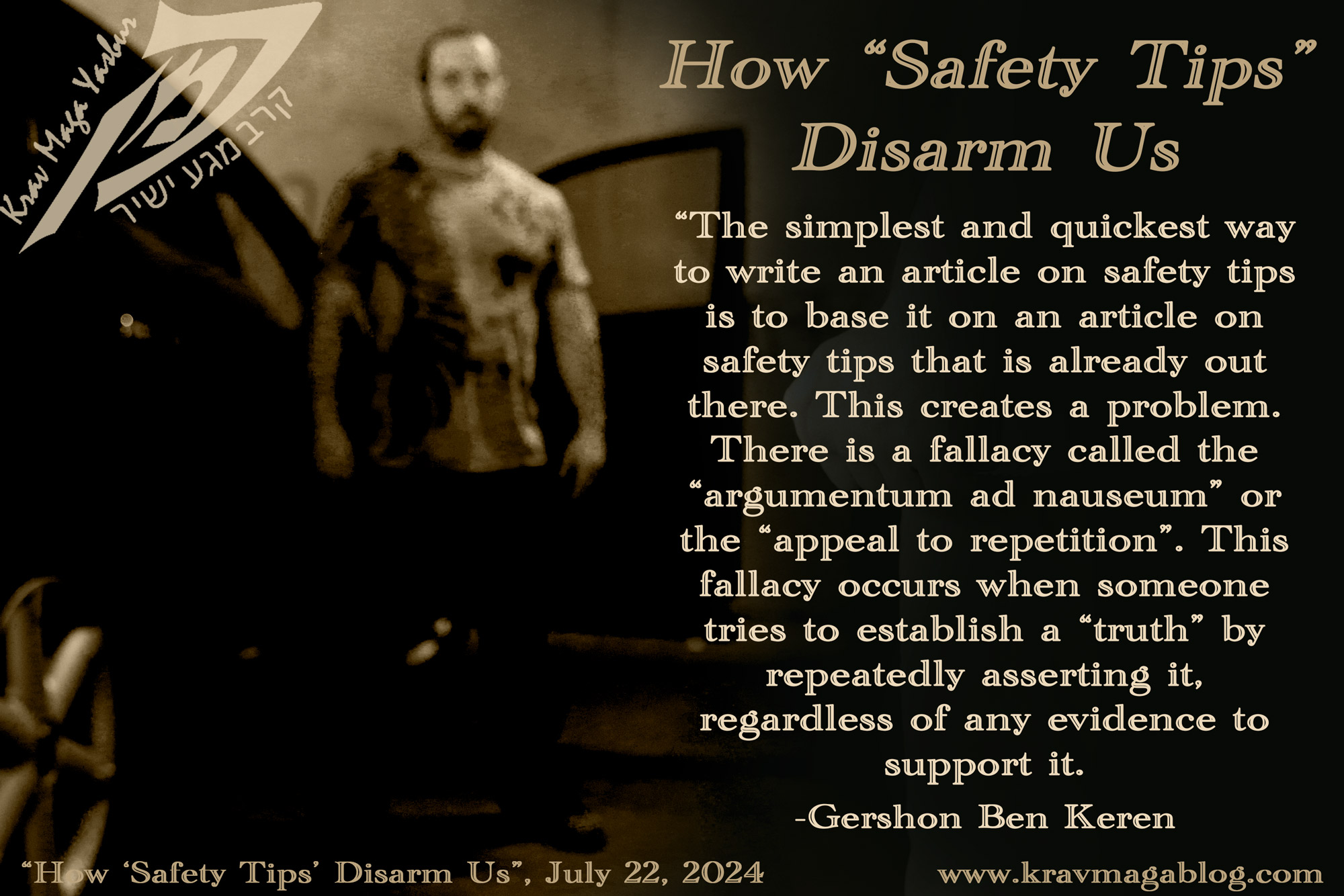How Safety Tips Disarm Us, is an article written by Gershon Ben Keren, a 5th Degree Black Belt in Krav Maga, who teaches Krav Maga in Boston, MA. He has also authored three Amazon best-Selling Books on Krav Maga.
Most people have not experienced violence firsthand. Most people don’t know someone who has been the target of a violent assault. So, when it comes to “imagining” what violence actually looks like, people have to go to other sources. News media is one. However, what is “newsworthy” isn’t the mundane or the ordinary, it’s the exceptional. This means when we hear of an abduction, and/or a news agency puts out CCTV footage of someone being dragged into a van etc., it’s because such events aren’t common. Also, because it elicits an emotional response, and plays to some of our darkest fears, the network hopes/intends that we will become a viewer who increases their audience numbers etc. News, after all is entertainment, put on by corporations to make money, which means they will report on what sells, and violent crime is something that has been proven to do so. Whilst we know when we watch an action movie, that the “stage fighting” is choreographed to be spectacular, dramatic and entertaining, there are moments when we can get carried away into thinking that it is somewhat realistic and representative of real-life violence etc. Still, most of us recognize that the types of threats, attacks, and violence that we will have to deal with aren’t akin to the fight scenes in The Bourne Supremacy. However, there is one source of information, concerning real-life violence that can give us an equally incorrect idea of how violence occurs, and those are the articles that contain “safety tips” e.g., the top ten things you should ALWAYS do when walking in a parking lot, five things that will stop you being targeted by ANY attacker, three things to do that will mean you’ll NEVER be mugged etc. The problem with safety tips is that they are presented as if they have some authority e.g., that they have been researched in some way, and “the tips” are the definitive conclusions of this research etc. In academic research, findings suggest possible conclusions, sometimes strongly, but usually acknowledge that further research needs to be done etc., whereas safety tips are presented as absolute truths. In this article I want to look at the ways such safety tips may put us in danger.
I understand why we like safety tips. In a few minutes we can learn a few rules that will ensure our safety. Most people don’t want to put a lot of time and energy into personal safety e.g., it’s not particularly enjoyable/rewarding to think of all the violent things another person(s) can potentially do to us etc. Safety tips offer us an alternative; they let us cut to the chase. They present themselves as a type of Cliff Notes when someone doesn’t want to spend the time reading the book, and just wants the bare facts. However, they shouldn’t be looked on in the same way, as Cliff Notes are based on an actual book, and have been created by individuals/authors who have the adequate credentials to analyze a plot, interpret a character’s actions etc. Many of these articles concerning safety tips have been created by individuals who have been commissioned by a website or magazine etc., to create content for them. There are websites which exist solely for drawing visitors to them to create advertising revenue. If the site believes that an article on safety tips will bring visitors to it, they will commission one, and there are a lot of freelance writers who are prepared to create such articles – and if this is how a freelance writer derives their income they are likely to have to write a lot of articles to do so, which means the likelihood that they spend a great deal of time researching them is pretty low. In fact, the simplest and quickest way to write an article on safety tips is to base it on an article on safety tips that is already out there. This creates a problem. There is a fallacy called the “argumentum ad nauseum” or the “appeal to repetition”. This fallacy occurs when someone tries to establish a “truth” by repeatedly asserting it, regardless of any evidence to support it. The idea is that if something is said enough people may believe it due to repeated exposure. If we keep seeing a safety tip that keeps getting repeated in multiple articles, we may start to believe it’s valid i.e., everyone seems to be asserting/saying it, so it must be true. In reality, it may have become the accepted “norm”/reality because many freelance writers commissioned to create content are basing their articles on each other.
Sometimes a safety tip will initially be based on an actual event(s). One “expert” tip that makes its way into many of these safety lists is, “When you’re packing your vehicle, try not to park next to a van. If you come back to your car and a van is parked next to your driver’s side, enter the vehicle on the passenger side. Some abductors have pulled their victims into their van while they entered their parked car.” Such a tip is probably based on an incident that made it into the news at some point, along with the “check under the van” tip, “because abductors often hide under the van and will grab your leg/ankle as you try to get into your car”, which was in all likelihood based on a real-life event that made it onto the evening news etc. The problem with such tips is not always the advice being given, which in very specific scenarios may be applicable, but the weight of importance given to it, when it is presented in a limited list. If such a tip is presented in a “top five safety tips when walking in a parking lot.” list, it is given a level of importance it may not really deserve i.e., it is more important than other safety tips that didn’t make the list. Its position in the list may also increase its importance e.g., if it is presented as tip number three, we will naturally see it as being more significant than tips four and five etc. When we start looking at these lists from these perspectives, we can see how they can create for us a false reality, concerning personal safety e.g., as long as we are looking out for white vans in parking lots, we have radically increased our safety and significantly reduced the risk of violence etc. The “white van” has long been a “folk devil” in personal safety, whilst in truth many different vehicles have been used in abductions e.g., Ted Bundy used a VW Bug, Angelo Buono and Kenneth Bianchi (the Hillside Stranglers) used a 1972 Cadillac Limousine, and John Wayne Gacy used an Oldsmobile Delta 88 etc. Those planning abductions use the vehicles they have access to e.g., David Parker Ray – the Toy-Box killer – did use a white van for his abductions, but this was because he was a mechanic/maintenance worker, and this was the vehicle he used for work.
The first part of solving a problem is to know what the problem is and the extent of it. In this regard safety tips and lists mislead us. They simplify personal safety into a set of rules, which those who mean us harm understand, and know how to get round, and they present an inaccurate picture of what real-life violence looks like, often elevating rare and very specific scenarios to appear as if they are commonplace and the most important types of situations that we will have to deal with, which unfortunately means that the more likely types of violence we may face are relegated or ignored.
0 COMMENTS















